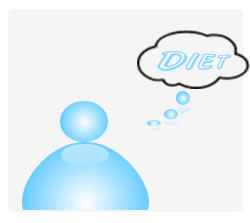A program launched by DOH and Salinas Corporation as their Corporate Social Responsibility (CSR) in promoting healthy lifestyle to reduce prevalence of lifestyle diseases particularly cardiovascular diseases, cancers, diabetes, and chronic obstructive pulmonary diseases as the key for Saving Lives, Our Lives.
This program is composed of a series of healthy lifestyle activities to be conducted on a regular basis in a barangay level and to be participated by all residents of every barangay within a municipality. The activities incorporate the 5 key components of the Healthy Lifestyle program of the Department of Health.

Obesity is defined as having an excessive amount of body fat. Being obese increases the risk of having diseases and health problems like diabetes and high blood pressure. One way to determine whether a person is obese is thru the Body Mass Index which is based on a person's height and weight. An adult who has a BMI of 25 to 29.9 is considered overweight while an adult who has a BMI of 30 or higher is considered obese.
Some symptoms of being obese include: Difficulty in sleeping, Snoring, Sleep apnea, Pain in your back or joints, Excessive sweating, Always feeling hot, Rashes or infection in folds of your skin, Feeling out of breath with minor exertion, Daytime sleepiness or fatigue and Depression.
1. Physical Inactivity. Having a sedentary lifestyle, a person can easily take in more calories every day than what you burn off through exercise or normal daily activities.
2. Unhealthy diet and eating habits. Having a diet that is high in calories, eating fast food, skipping breakfast, eating most of your calories at night, consuming high-calorie drinks and eating oversized portions all contribute to weight gain.
1. Genetics - Your genes may affect the amount of body fat you store and where that fat is distributed.
2. Family history - Family members tend to have similar eating, lifestyle and activity habits. If one or both of your parents are obese, your risk of being obese is increased.
1. Heart disease is a major cause of the premature death rate among obese people while Hypertension, Congestive Heart Failure and Coronary Thrombosis, Cancer and Diabetes are also prevalent among obese individuals.
The goal of obesity treatment is to achieve and maintain a healthier weight to reduce your risk of serious health problems and enhance your quality of life.
Slow and steady weight loss of 1 or 2 pounds (1/2 to 1 kilogram) a week is considered the safest way to lose weight and the best way to keep it off permanently.
Increased physical activity or exercise is also an essential part of obesity treatment. The goal of activity and exercise for weight loss is to burn more calories, although exercise offers many other health benefits as well. How many calories you burn depends on the frequency, duration and intensity of your activity.
Exercise regularly. One of the most important things you can do to prevent weight gain is to exercise regularly.
Eat healthy meals and snacks. Focus on low-calorie, nutrient-dense foods, such as fruits, vegetables and whole grains. Avoid saturated fat and limit sweets and alcohol. Choose a variety of foods throughout the day.
Monitor your weight regularly. People who weigh themselves at least once a week are more successful in keeping off excess pounds. Monitoring your weight can tell you whether your efforts are working and can help you detect small weight gains before they become big problems.
If you like to join our Weight Loss Program, you can send us an e-mail with your complete name, contact details and address at healthylifestyle@salinas.com.ph. Please specify weight loss program as your subject line.